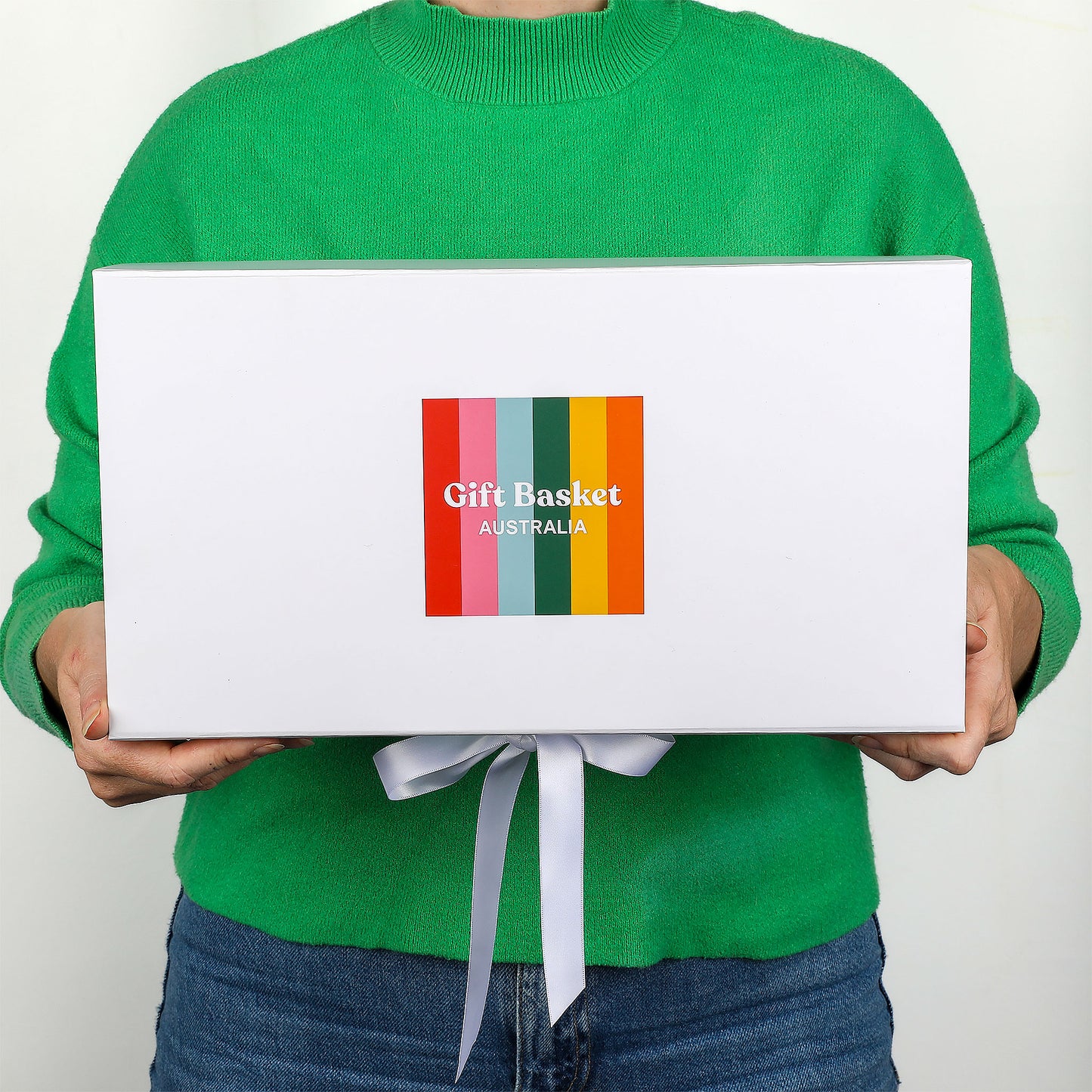Just Add Cheese
Just Add Cheese
The Just Add Cheese hamper is the ultimate gift for any cheese lover, filled with everything needed to create an impressive grazing spread. Featuring artisan crackers, gourmet olives, salted pretzels, roasted nuts, chocolate-coated treats, and flavourful condiments perfectly suited for cheese pairing. It also includes The New Rules of Cheese — an inspiring guide for cheese enthusiasts — and a stylish wooden serving board with cheese knife for effortless entertaining. Simply add your favourite cheeses and enjoy an elegant tasting experience. A thoughtful and delicious gift for foodies, entertainers, or anyone who loves the finer things.
New Packaging:
We are currently transitioning to new packaging for our products. During this period, you may receive items in either our previous or new packaging. Please note that while the packaging design or materials may differ, the product contents and quality remain exactly the same.
We appreciate your understanding and support as we make this sustainable and improved change.

Chocilo No Added Sugar Dark Chocolate Block 60g
$12.95 AUD
Byron Bay Milk Choc Chunk Cookie 60g
$6.95 AUD
Dello Mano Brownie Cube 28g
$9.95 AUDCouldn't load pickup availability
Share










Do you want to send your selections to a single address, or to multiple addresses?
Collapsible content
What's inside?
- Valley Produce Co. Cracked Black Pepper Crackerthins 100g
- Ogilvie & Co. Antipasto Olives 115g
- Ogilvie & Co. Muscatel Clusters 60g
- Random Harvest Australian Quince Paste 60g
- The Nut Market Salted Peanuts 100g
- Chocilo Salted Pretzels in Milk Chocolate 130g
- Book: The New Rules of Cheese Handbook
- Axel Acacia Board with Knife
Allergy Information
Contains:
- dairy
- gluten
- milk
- nuts
- soy
Our quality promise
Each gift basket is crafted using only carefully selected, high-quality products for an exceptional gifting experience.










